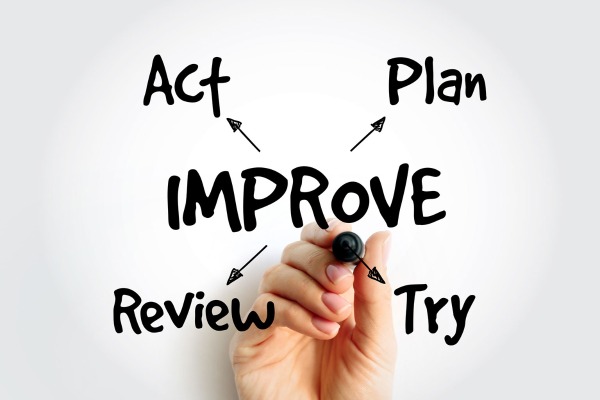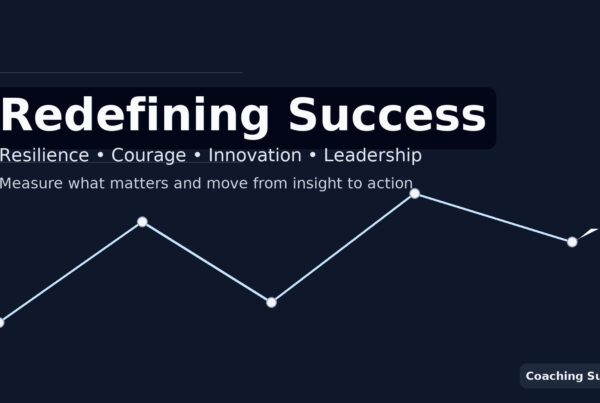Creating a Culture of Continuous Learning: The Role of Coaching in Business Organizations
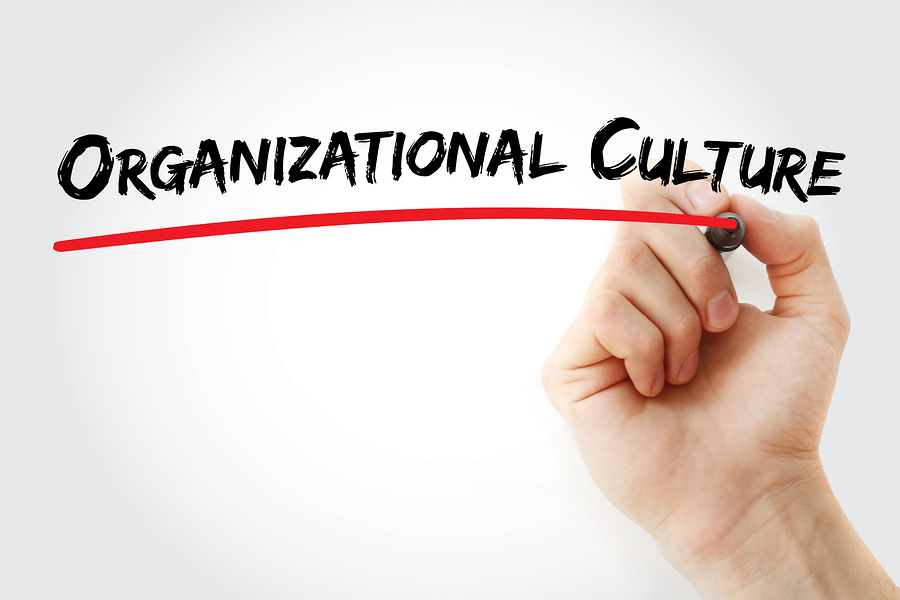
In today’s rapidly evolving business landscape, the ability to adapt and learn continuously has become a crucial competitive advantage. Embracing a culture of continuous learning allows organizations to stay ahead of industry trends, foster innovation, and improve overall performance. One of the key drivers in creating this culture is the implementation of coaching within business organizations. This blog explores the role of coaching in shaping organizational culture and fostering a culture of continuous learning, examining its benefits and offering insights on how to implement coaching programs effectively.
Coaching and Its Impact on Fostering a Culture of Continuous Learning
Definition of Coaching:
Coaching is a collaborative, goal-oriented process focusing on personal and professional growth. It involves a skilled coach working closely with an individual or a group to identify their objectives, assess their strengths and weaknesses, and develop actionable strategies for improvement. The coach provides guidance, support, and constructive feedback, enabling individuals to overcome challenges, enhance their performance, and achieve their goals. Coaching can be applied to various personal and professional development aspects, including skill enhancement, leadership growth, and even career path advancement.
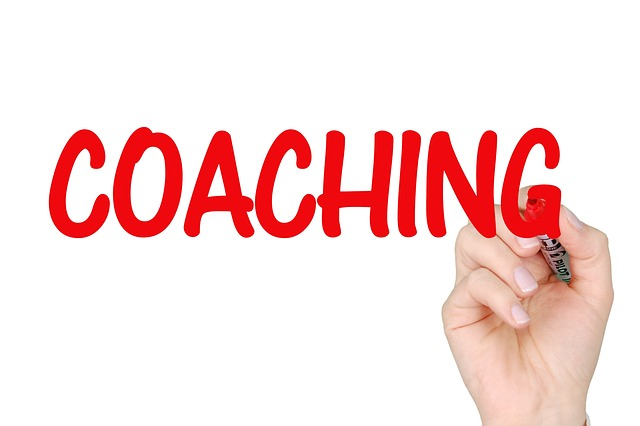
The Role of Coaching in Fostering a Culture of Continuous Learning
Coaching plays a crucial role in promoting continuous learning within organizations. It encourages employees to take ownership of their personal and professional growth, stimulates curiosity and innovation, and strengthens problem-solving abilities. By offering tailored support and guidance, coaching empowers employees to develop new skills, refine existing ones, and adapt to the ever-changing demands of their roles and industries. As a result, organizations that embrace coaching benefit from a more engaged, agile, and high-performing workforce, better equipped to navigate the challenges of today’s dynamic business environment.
Understanding the Need for Continuous Learning
As technology advances and industries change, businesses must be agile and adaptive to remain competitive. A culture of continuous learning encourages employees to stay updated with the latest trends, acquire new skills, and develop their existing abilities. This helps individuals grow professionally and contributes to healthy organizational culture, employee behaviour, and the organization’s overall success.
Continuous learning creates an adaptable, innovative, and prepared workforce to tackle new challenges. By investing in the development of their employees, businesses can reap numerous long-term benefits, including increased productivity, improved employee engagement, higher education, and reduced turnover rates.
Embracing a culture of continuous learning offers numerous benefits for businesses, helping them stay competitive and agile in an ever-changing landscape. Some of the key advantages include:
Increased adaptability:
A workforce that continuously learns and updates its skills is better equipped to respond to changes in the market, industry trends, and technological advancements. This adaptability enables businesses to stay ahead of their competition and capitalize on new opportunities.
Fostering innovation:
A culture of continuous learning encourages employees to think creatively, explore new ideas, and experiment with novel approaches. This innovative mindset drives growth and helps businesses differentiate themselves from their competitors.
Improved employee retention:
When organizations invest in their employees’ development, it demonstrates a commitment to their growth and success. This, in turn, is employee behaviour and leads to increased job satisfaction and loyalty, a positive way of reducing turnover rates and the associated costs of hiring and training new staff.
Enhanced performance:
Continuous learning allows employees to refine their skills, acquire new knowledge, and stay updated with best practices. As a result, they become more efficient, productive, and capable of making better-informed decisions, positively impacting the organization’s overall performance.
Attracting top talent:
Businesses prioritizing continuous learning and development are more likely to attract highly skilled and motivated individuals. Top talent is drawn to organizations that offer growth, learning, and advancement opportunities.
Developing future leaders:
A culture of continuous learning helps leaders identify and nurture potential leaders within the organization. Businesses can create a talent pipeline ready to step into a leadership role or roles when needed by using leadership styles and providing employees with opportunities to develop leadership skills.
Defining Coaching in the Context of Business Organizations
In business organizations, coaching refers to a personalized, goal-oriented process that aims to enhance an individual’s personal and professional growth. It involves a skilled coach working closely with employees to identify their objectives, assess their strengths and weaknesses, and develop actionable strategies for improvement. The coach provides guidance, support, and constructive feedback, enabling employees to overcome challenges, enhance performance, and achieve goals.

Examining How Coaching Differs from Traditional Training and Development Approaches
Traditional training and development approaches often involve one-size-fits-all programs, which may not address individual employees’ specific needs and learning styles. In contrast, coaching offers a more tailored approach, focusing on each individual’s unique goals, strengths, and areas for improvement. This personalized attention allows employees to make faster progress and achieve better results. Furthermore, coaching is typically an ongoing process, whereas traditional training programs may be limited to specific timeframes or events.
Illustrating the Core Principles of Coaching: Inquiry, Reflection, and Self-Directed Learning
Coaching is a collective activity built upon several core organizational core values and principles that foster continuous learning:
Inquiry:
Coaches ask thought-provoking questions encouraging employees to think critically, explore new ideas, and gain deeper insights into their performance and potential.
Reflection:
Through coaching, employees are guided to reflect on their experiences, decisions, organizational values, and actions, leading to a greater understanding of their strengths, weaknesses, and areas for growth.
Self-Directed Learning:
Coaching empowers individuals to influence their learning journey by setting goals, identifying resources, and developing strategies to achieve those goals.
Highlighting the Role of Coaching in Facilitating Individual and Organizational Growth
Coaching plays a pivotal role in facilitating both individual and organizational growth. By providing personalized support and guidance, coaching enables employees to develop new skills, refine existing ones, and adapt to the ever-changing demands of their roles and industries. This, in turn, results in a more engaged, agile, and high-performing workforce that can drive the organization’s success. Moreover, coaching helps identify and nurture potential leaders within the organization, ensuring a steady pipeline of talent ready to step into leadership roles when needed.
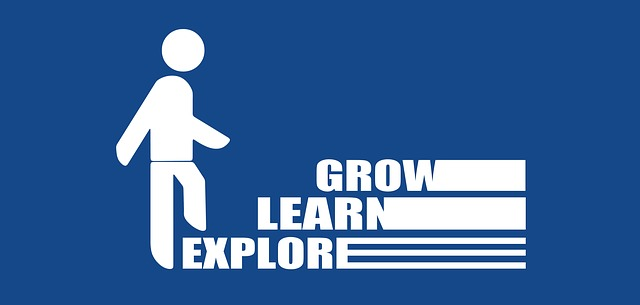
Benefits of Coaching in Creating a Culture of Continuous Learning
Coaching is vital in cultivating positive company culture, one of continuous learning. It provides employees with the guidance and support they need to develop their skills, overcome challenges, and achieve their professional goals.
Individual Benefits
Enhancing Employee Engagement and Motivation:
Coaching fosters a sense of ownership and commitment to personal and professional growth. Engaged employees are more likely to be motivated, proactive, and dedicated to their roles, leading to better performance and job satisfaction.
Developing Self-Awareness and Fostering Personal Growth:
Through coaching, employees gain insights into their strengths, weaknesses, and areas for improvement. This heightened self-awareness enables them to set realistic goals, develop strategies for growth, and become more effective in their roles.
Building Confidence and Empowering Employees to Take Risks:
Coaching helps employees build confidence in their abilities and leadership style. It encourages them to take calculated risks, leading to innovation and personal growth. Coaching empowers employees to step out of their comfort zones and explore new development opportunities by providing a supportive environment.
Organizational Benefits
Improving Employee Retention and Reducing Turnover:
Organizations that invest in coaching are committed to their employees’ growth and success. This leads to increased job satisfaction and loyalty and reduced turnover rates, saving businesses time and resources in recruiting and training new employees.
Enhancing Knowledge Sharing and Collaboration Among Teams:
Coaching promotes open communication, feedback, and collaboration among team members and culture leaders. As employees develop their skills and share knowledge, the organization benefits from improved teamwork, organizational leadership, problem-solving abilities, good leadership, and overall performance.
Promoting Innovation and Adaptability Within the Organization:
A culture of continuous learning, supported by coaching, encourages employees to think creatively, explore new ideas, and adapt to changes in their industry. This innovative mindset drives growth and helps organizations stay competitive in an ever-changing business landscape.
How to Implement Coaching Programs in Business Organizations

Organizations must implement effective coaching programs to reap the benefits of coaching and create a culture of leadership, business strategy, and continuous learning from effective leaders. Here are some key steps to consider:
Identifying Coaching Needs and Objectives Within the Organization
Before implementing a coaching program, it is essential to identify the specific needs and objectives within the organization’s culture or team’s culture. Conduct a thorough assessment of employees’ skills, strengths, areas for improvement, and gaps in knowledge or performance. Determine the desired outcomes of the coaching program, such as enhancing employee engagement, developing leadership skills, or improving overall performance. Clear objectives provide direction and help measure the program’s success.
Selecting and Training Internal Coaches or Hiring External Coaching Professionals
Choose whether to develop internal coaches from within the organization or hire external coaching professionals. Identify individuals with relevant experience, expertise, and strong interpersonal skills if selecting internal coaches. Provide them with the necessary training and resources to develop their coaching abilities. If hiring external coaches, look for professionals with a proven track record in coaching and understanding your organization’s vision or company’s goals and vision or company’s culture and specific needs and objectives.
Creating a Coaching Framework and Establishing Clear Guidelines
Develop a coaching framework outlining the program’s structure, processes, and expectations. This should include guidelines on the frequency and duration of coaching sessions, the methods for tracking progress, and the criteria for evaluating the company’s success. Establish clear communication channels between coaches, coachees, and other stakeholders to ensure transparency and accountability throughout the program.
Developing a Coaching Culture Through Communication and Organizational Support
Creating a top culture and leadership that supports and encourages continuous learning is crucial to fully realizing a coaching program’s benefits. Promote open communication, feedback, and collaboration throughout the organization. Encourage employees at all levels to share their knowledge, experiences, and best practices with one another. Provide resources and opportunities for self-directed learning, and recognize and celebrate the achievements of employees who demonstrate growth and progress. By fostering a supportive environment, organizations can maximize the impact of their coaching programs and drive lasting change.
Overcoming Challenges in Implementing Coaching Programs
Implementing coaching programs may encounter challenges such as resistance to change, the influence of organizational culture, time constraints, cultural fit, and limited resources. However, by addressing these challenges head-on, organizations can overcome barriers and create a supportive coaching and leadership culture. Regular evaluation and measurement of coaching initiatives ensure their effectiveness and demonstrate their impact on individuals and the organization.

Addressing Resistance to Change and the Fear of Coaching in the Workplace
Resistance to change and fear of coaching can be significant barriers to implementing coaching programs. To address these concerns:
- Communicate the benefits and value of coaching clearly and consistently throughout the organization.
- Involve key stakeholders in the decision-making process and provide opportunities for employees to ask questions and voice their concerns.
- Offer success stories and testimonials from employees who have benefited from coaching to demonstrate its positive impact on personal and professional growth.
Dealing with Time Constraints and Resource Limitations
Time constraints and limited resources can hinder the successful implementation of coaching programs. To overcome these challenges:
- Prioritize coaching initiatives based on their potential impact and the organization’s needs.
- Develop a realistic timeline for the implementation and allocate resources accordingly.
- Consider leveraging technology, such as e-coaching platforms or video conferencing tools, to facilitate remote coaching sessions and reduce time and resource requirements.
Ensuring Coaching Aligns with Organizational Goals and Objectives
To develop leaders to maximize the effectiveness of coaching programs:
- Ensure they align with the organization’s overall goals and objectives.
- Involve key stakeholders, including senior management and HR professionals, in the planning and development stages of the coaching program.
- Establish clear performance indicators and evaluation criteria to measure progress and success.
- Regularly review and adjust the coaching program to align with the organization’s strategic direction.
Evaluating the Effectiveness and Measuring the Impact of Coaching Initiatives

Evaluating the effectiveness of coaching initiatives and measuring their impact on individual and organizational performance is crucial. Develop a comprehensive evaluation framework that includes quantitative and qualitative measures, such as employee feedback, performance metrics, and retention rates. Conduct regular assessments and gather data to track progress and identify areas for improvement. Use this information to refine the coaching program, ensuring it remains effective and delivers the desired outcomes.
Summary of Additional Benefits of Coaching in Business Organizations
Coaching is vital in cultivating a workplace culture full of continuous learning. It provides employees with the guidance and support they need to develop their skills, overcome challenges, and achieve their professional goals. Some key benefits of coaching in business organizations include:
Individualized Attention:
Coaching offers personalized support tailored to each employee’s unique needs, strengths, and areas for improvement. This individualized approach enables employees to make faster progress and achieve better results.
Improved Performance:
Through regular coaching sessions with senior leaders, employees receive constructive feedback and actionable strategies to enhance their performance. This increases productivity, better decision-making, a good leader and employee behaviour, and improves organizational performance.
Increased Employee Engagement:
Coaching relationships foster trust and open communication, making employees feel more connected and engaged. Engaged employees are more likely to be motivated, committed, and proactive.
Enhanced Leadership Skills:
Coaching helps organizational leaders and other employees develop essential leadership skills such as effective communication, problem-solving, and strategic thinking. These skills empower employees to take on greater responsibility within the organization and contribute to its success.
Reduced Turnover Rates:
Employees who receive coaching and development opportunities are more likely to feel valued and supported by many leaders in their organization. This leads to increased job satisfaction and reduced turnover rates, saving businesses time and resources in recruiting and training new employees.
Conclusion:
In an ever-changing business landscape, creating a culture of continuous learning is vital for organizational success. Coaching catalyzes individual and organizational growth, promoting engagement, innovation, and adaptability. By investing in coaching programs, businesses empower employees to embrace lifelong learning, enabling them to thrive in an evolving world. Embrace coaching, unlock potential, and cultivate a corporate culture full of continuous learning to drive your organization’s success.
The importance of influencing a strong organizational culture of continuous learning in business organizations cannot be overstated. As industries evolve and technology advances, organizations must adapt and embrace a strong organizational culture of continuous learning to stay competitive. Coaching is pivotal in fostering this culture, offering personalized guidance and support that empowers employees to grow, innovate, and thrive.
By reinforcing the role of coaching in promoting the desired culture of continuous learning, businesses can benefit from increased adaptability, improved performance, and enhanced employee engagement. As organizations navigate the challenges of an ever-changing business landscape, exploring coaching opportunities and embracing lifelong learning for individual and organizational success is crucial. By investing in coaching programs and nurturing a culture of continuous learning, organizations can unlock their full potential and drive ongoing growth and prosperity.
Begin the process of improving the culture within your organization today and contact Joel at joel@coachingsuccess.ca
